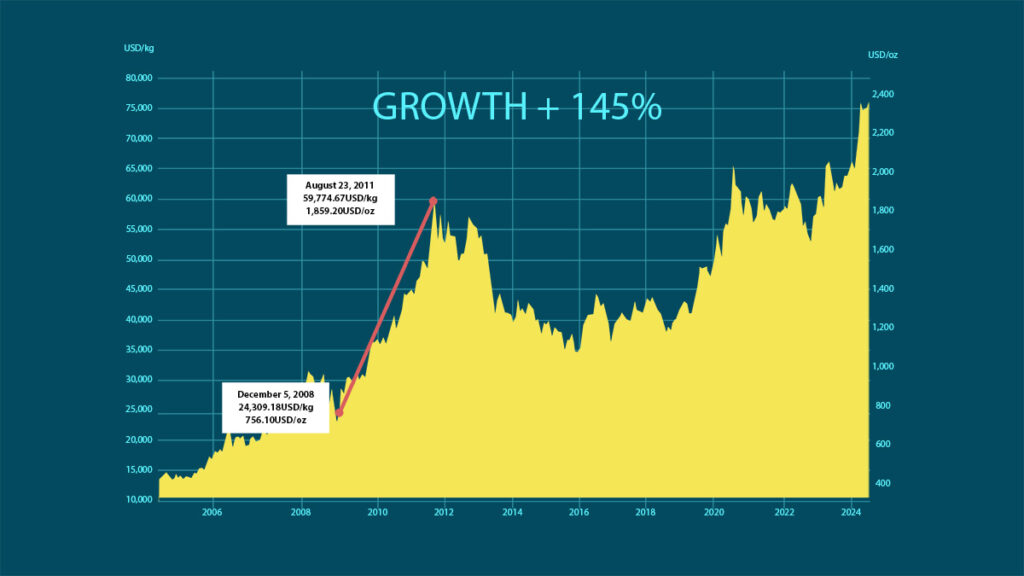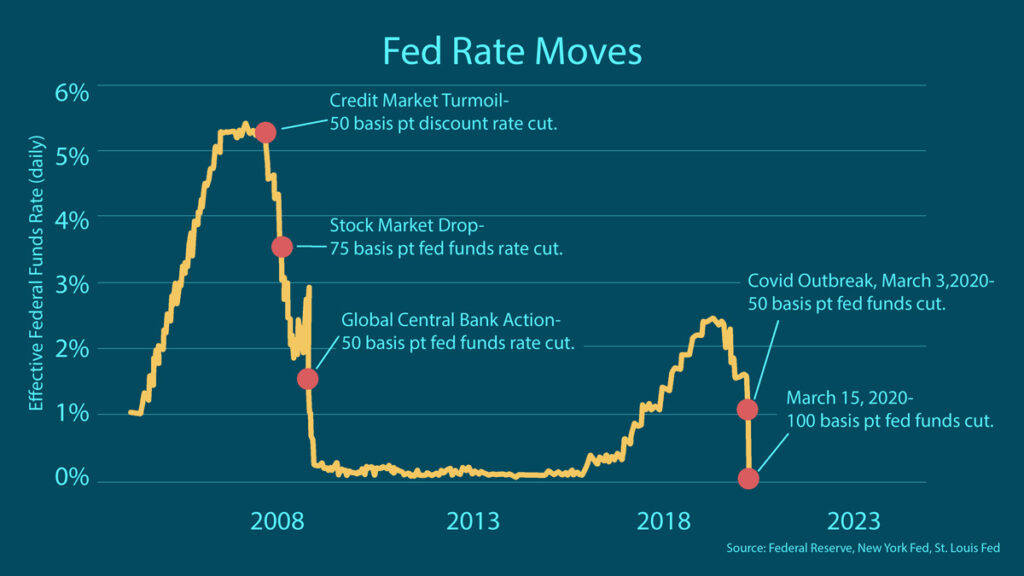The Federal Reserve’s faster and more decisive rate cuts could have significant repercussions on the US economy. Investors anticipating the potential impact can better position their portfolios and retirement accounts to safeguard against future risks.
In this week’s The Gold Spot, Scottsdale Bullion & Coin Precious Metals Advisors Steve Rand and Brian Conneely explain how the interest rate cuts will impact the broader economy, the US government’s credit score, and investors’ expectations moving forward.
Rate Cut Effect on the Economy
The Federal Reserve’s recent rate cuts were far more aggressive than analysts expected. While most anticipated a 25-basis-point reduction, the Fed slashed rates by a full half-point (50 bps). Additionally, fiscal leaders are already signaling another potential 50-basis-point cut by year-end, marking one of modern history’s most dramatic rate-cutting cycles. This bold move could trigger an equally strong economic response.
Burden for the US Dollar
Rate cuts often initiate a period of quantitative easing (QE), where the government seeks to stimulate economic activity and increase the money supply. A decrease in interest rates leads to lower returns on dollar-linked assets. As a result, investors tend to reduce their reliance on the dollar and diversify into more stable investments. The result is often a weakening during a period of substantial rate cuts.
A Boon to Gold Prices
While interest rates often kneecap dollar growth, these easing periods can be a boon to gold prices. Immediately following the Fed’s rate-cut announcement, gold surged past $2,600 and has been flirting with $2,700 an ounce ever since. The last time the government cut rates this rapidly was in 2008. In response, gold prices surged by more than 145% over the next three years.

Gold spot prices rose over 145% from December 5, 2028 to August 23, 2011.
This past example of interest rate cuts significantly impacting gold prices could similarly affect the yellow metal today. Experts are raising their gold price forecasts, even with the metal currently at all-time highs.
👉 Related reading: Gold’s Rally Just Getting Started, Predicts ING
US Credit Score
Every American is assigned a credit score, which banks and other lending institutions use to judge their ability to manage debt properly. If the US government received a credit score from its lenders—primarily US citizens and a handful of foreign nations—the number would barely register. Lenders would be reluctant to extend another penny of credit.
While most people focus on the $35 trillion national debt, the debt-to-GDP ratio is a crucial metric because it compares what we owe to what we can afford to pay back. This key number jumped from 77% in 2009 to over 121% in 2024, marking a nearly 100% jump. With interest costs reaching $3 billion per day, the government’s ability to pay up is being questioned.
When the debt-to-GDP ratio is over 77% for any prolonged period of time, that signals there are significant financial troubles.–
No Plans to Address US National Debt
The upcoming presidential election is likely to bring more volatility to the economy as Americans across the political spectrum remain uncertain about what November will bring. Despite differences in social policies, both parties share similar economic tendencies. Both former President Donald Trump and the current Vice President Kamala Harris have proposed billion-dollar initiatives without outlining a clear funding strategy, much less a plan to address the growing national debt.
Both candidates have many plans for what they want to do moving forward, but all those plans cost money. There’s actually no plan whatsoever to reduce the debt.–
For decades, the misguided experiment of Modern Monetary Theory (MMT) has dominated fiscal policy, and there’s little sign of change on the horizon.
Leverage Past Lessons to Shape a More Prosperous Future
Nearly every time the Fed cut interest rates this quickly, the economy took a turn for the worse. This happened in 2020 on the back of pandemic-era spending, throughout 2008 following the housing market bubble, and many times before.

We’ve already seen central banks buying record amounts of gold for the past few years, and retail demand is starting to follow suit. Now is the time for investors to protect their financial well-being against the potential for a serious economic downturn. Smart money investors are using gold as wealth insurance due to the precious metal’s inherent value and tendency to keep pace with inflation.
Question or Comments?
If you have any questions about today’s topics or want to see us discuss something specific in a future The Gold Spot episode, please add them here.
Comment


Questions or Comments?
"*" indicates required fields